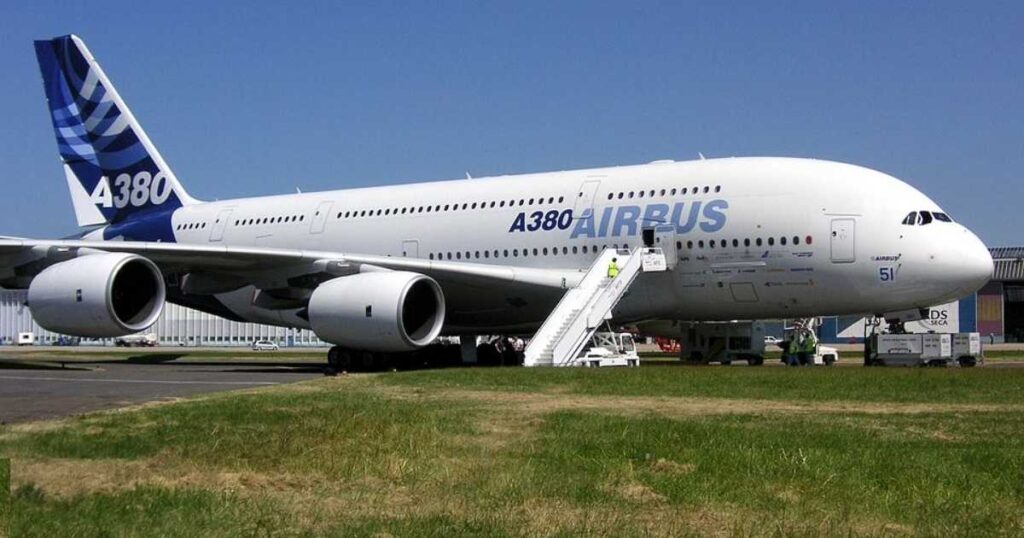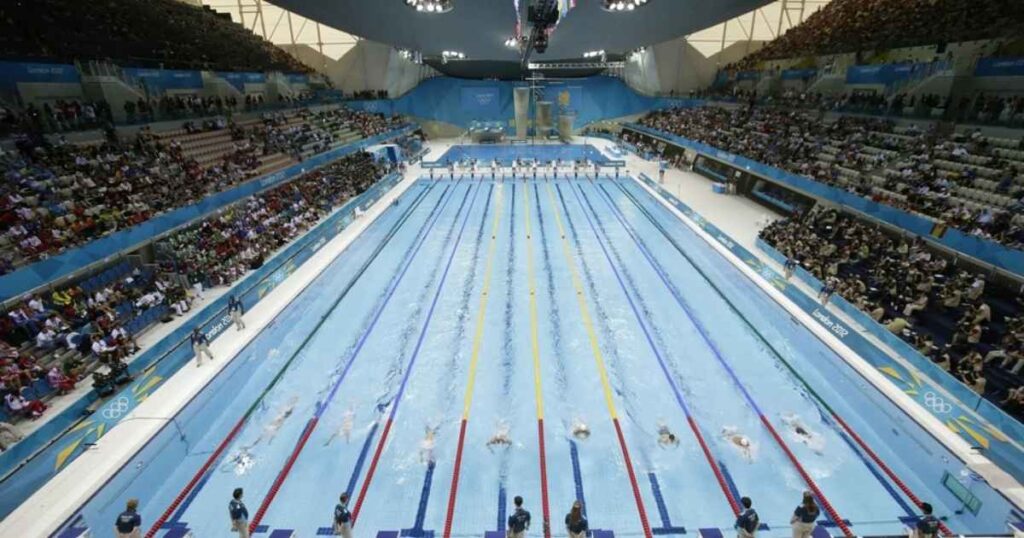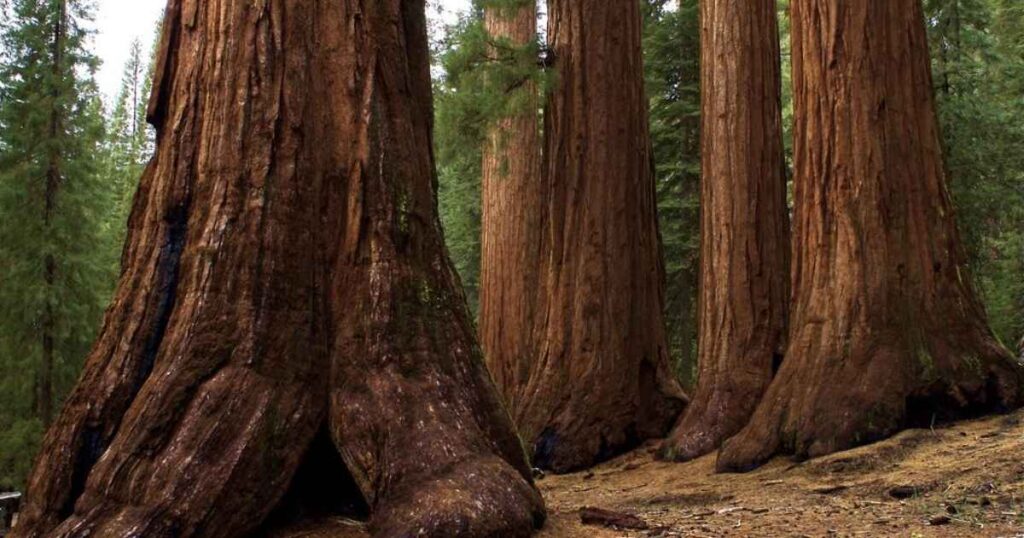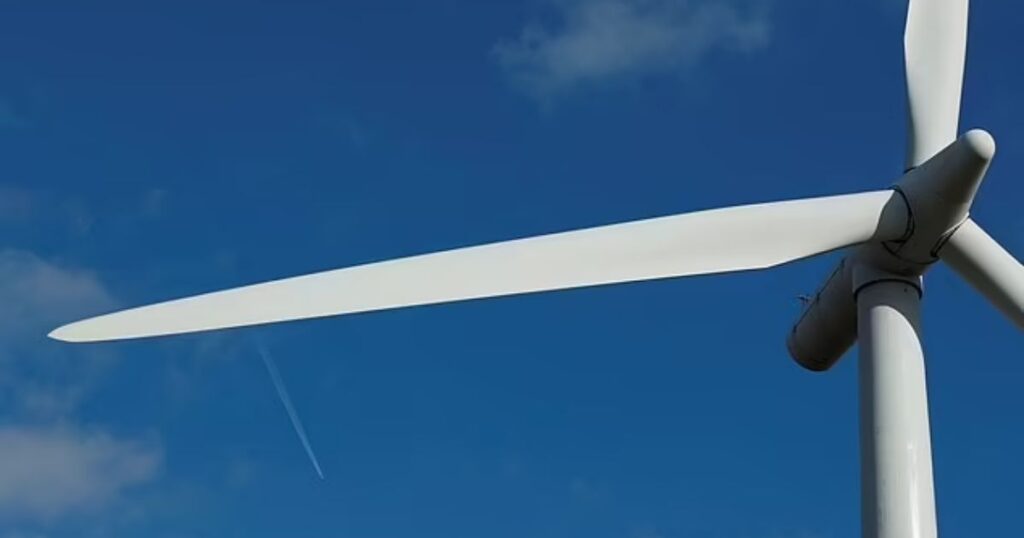Ever wondered how tall 80 feet really is? Numbers can feel abstract until you compare them with things we see in everyday life. Eighty feet is taller than most neighborhood buildings, longer than a tennis court, and nearly the same height as the massive Airbus A380’s tail. Put simply, it’s a measurement that’s easier to grasp when we visualize it.
In practical terms, 80 feet equals about 24.3 meters, or roughly 7–8 stories of a building depending on floor height. That makes it an impressive scale to imagine, tall enough to rival giant trees, towering statues, or even some of the world’s largest animals. Whether you’re thinking about construction, sports, nature, or just satisfying curiosity, breaking down this measurement through real-life comparisons makes it easier to understand.
This article explores exactly what 80 feet tall looks like in different contexts. From sports courts and vehicles to famous landmarks and natural wonders, you’ll see how 80 feet stacks up in ways that are simple and relatable.
How Tall is 80 Feet?
Eighty feet may sound like just a number, but when you picture it in real life, it’s impressively tall. To put it simply, 80 feet equals 960 inches or about 24.3 meters, which is the height of a mid-rise building with around 7 to 8 floors. That’s taller than most trees you see in a neighborhood and about the same height as large billboards standing over highways.
In everyday comparisons, 80 feet is roughly the height of a giant sequoia tree, a telephone tower, or a small Ferris wheel. Thinking in these terms makes it easier to visualize just how high this measurement reaches. It’s not just tall, it’s tall enough to dominate its surroundings and be noticed from far away.
So whenever you hear 80 feet, think of it as the height that stretches beyond normal houses and small structures, reaching into the category of tall buildings and iconic landmarks. It’s a scale that moves from everyday size to something truly towering.
What Does 80 Feet Look Like?
Eighty feet is about the same as an 8-story building, which makes it far taller than most houses or small shops. If you’ve ever stood near a tall palm tree or a large billboard on a highway, that’s close to what 80 feet looks like in real life. It’s the kind of height that instantly catches your attention because it rises well above everyday surroundings.
Another way to picture it is by looking at familiar objects stacked together. For example, it’s roughly the height of 14 average adults standing one on top of the other, or about the same length as a school bus lined up end-to-end three times. In simple terms, 80 feet is tall enough to stand out in a city skyline or dominate an open landscape.
Understanding 80 Feet in Simple Terms
To understand 80 feet in simple terms, imagine stacking 13 tall adults standing on each other’s shoulders, that would give you almost the exact same height. Another way to see it is by comparing it to four cars parked end-to-end on top of each other, reaching up to 80 feet. These everyday visuals make the number less abstract and much easier to picture.
In sports, think of a basketball court, which is about 94 feet long. If you stood the court on its end, 80 feet would cover nearly the entire length. That shows just how significant this measurement is, it’s not just tall, it stretches into the scale of major structures and fields.
Put simply, 80 feet is far beyond human height, furniture, or small objects. It enters the world of architecture, tall trees, and large machinery, making it a measurement that represents scale and presence in a very noticeable way.
Read Also >>> 12 Things That Are 10 Meters Long or Big
Things That Are 80 Feet Tall Or Long
80 feet is about the height of an 8-story building (10 feet per floor), the length of a tennis court, one-fifth of the Great Pyramid of Giza, the height of the White House, the size of a blue whale, two buses parked end to end, or the wingspan of an Airbus A380.
The White House

The White House, home to the President of the United States, is a good reference point when thinking about 80 feet. The building itself stands at about 70 feet tall, which means 80 feet is just a little taller than this world-famous landmark. If you can picture the White House, adding an extra 10 feet gives you a perfect sense of how tall 80 feet really is.
This comparison helps because the White House is a structure most people recognize from photos or TV. Standing in front of it, you’d see that it rises several stories high but doesn’t reach the size of a skyscraper. So when you imagine 80 feet, you’re thinking of a height that’s slightly above the White House, tall enough to stand out yet still relatable on a human scale.
Blue Whale

The blue whale, the largest animal on Earth, provides a great way to picture 80 feet in length. Most adult blue whales grow between 70 and 90 feet long, which means an 80-foot whale sits right in the middle of their average size. This makes it almost the perfect living example of how long 80 feet actually is. When you imagine this giant stretching from head to tail, you’re basically looking at the full measurement of 80 feet in motion.
To put it into perspective, an 80-foot blue whale is longer than a basketball court. It’s also about the length of three school buses parked one after another. Seeing such a massive animal in real life helps people understand the true scale of 80 feet, because it’s not just a number, it’s a size you can visualize clearly through the whale’s enormous body
Airbus A380

The Airbus A380, the world’s largest passenger airplane, is another powerful way to understand the scale of 80 feet. While the aircraft itself is much larger overall, its height from the ground to the top of the tail measures about 80 feet. That means when you stand beside an A380, looking up at its towering tail, you’re staring at the full scale of 80 feet in height.
To make it easier to picture, the A380’s height is like stacking a seven-story building on the runway. It gives a clear sense of just how tall 80 feet really is, especially when you see this massive plane up close. Comparing 80 feet to such an iconic aircraft makes the number feel real and impressive.
Standard Tennis Court

A standard tennis court is another good way to picture the length of 80 feet. The official length of a doubles tennis court is 78 feet, which is just 2 feet shorter than 80. That means if you stretched out the court from baseline to baseline, you’d almost have the exact measurement of 80 feet.
This makes it easy to visualize—standing at one end of the court and looking all the way to the other side gives you a nearly perfect example of what 80 feet looks like in real life. So, whenever you see a tennis match, you’re essentially looking at something that’s almost the same as 80 feet in length.
Olympic Swimming Pool Length

An Olympic swimming pool is 50 meters long, which equals about 164 feet. That’s just a little more than twice the length of 80 feet. To put it simply, if you were to measure an Olympic pool and divide it into two equal parts, each half would be slightly longer than 80 feet.
This makes 80 feet a very useful comparison when thinking about pool sizes. For instance, swimming a lap of 80 feet would take you just under halfway across the full Olympic pool, giving you a clear sense of the distance in real-world terms.
Two Standard City Buses End-to-End

A standard city bus in the U.S. is usually about 40 feet long. When you place two of them end-to-end, the combined length is roughly 80 feet. That means if you’ve ever stood on a busy street and seen two buses parked right behind each other, you’ve basically seen what 80 feet looks like in real life.
This comparison makes 80 feet easier to picture because buses are large, familiar vehicles we see often. Thinking of two lined up together gives a strong, everyday example of how long 80 feet actually is.
Half the Height of the Arc de Triomphe

The Arc de Triomphe in Paris stands at about 164 feet tall, making it one of the city’s most iconic monuments. If you take half of that height, you get roughly 82 feet, which is almost the same as 80 feet tall. This means that something measuring 80 feet is basically half the size of this famous landmark, giving you a clear and relatable visual.
Using this comparison, it becomes easier to understand how tall 80 feet really is. While the Arc de Triomphe towers over the Champs-Élysées, half its height still represents a massive structure. Whether you think of it in terms of buildings, monuments, or real-world objects, connecting 80 feet to half the Arc de Triomphe helps put the measurement into perspective.
One-Quarter of the Statue of Liberty

The Statue of Liberty in New York Harbor stands at about 305 feet tall from the base to the tip of her torch. If you divide that by four, one-quarter of the statue’s height comes out to roughly 76 feet, which is nearly the same as 80 feet tall. This makes 80 feet comparable to a significant portion of one of the most famous monuments in the world.
Visualizing 80 feet as a quarter of the Statue of Liberty helps people better grasp the scale. Even just one-quarter of this iconic structure is towering, showing how tall 80 feet really is in everyday comparisons. It’s a reminder that 80 feet isn’t just a number—it’s the height of something grand enough to match a piece of an American symbol recognized worldwide.
1/5 Pyramid of Giza
The Great Pyramid of Giza is one of the Seven Wonders of the Ancient World, standing originally at about 481 feet tall. If you take one-fifth of its height, the result is approximately 96 feet, which is close to 80 feet tall. This means 80 feet is just a little shorter than one-fifth of this massive pyramid that has stood for over 4,500 years.
By comparing 80 feet to a fraction of the Great Pyramid of Giza, it becomes easier to imagine its scale. Even a fifth of this enormous structure still towers above most buildings and landmarks we see daily. This perspective shows just how tall 80 feet really is when matched with one of the largest man-made monuments in history.
One-Third of a Giant Sequoia Tree

The giant sequoia tree, found mainly in California’s Sierra Nevada, is one of the tallest tree species on Earth. These natural giants can reach an average height of 250 to 300 feet, with some exceptional ones growing even taller. If you take one-third of a giant sequoia’s height, that would measure around 80 to 100 feet, putting 80 feet right in line with this comparison.
Thinking of 80 feet as one-third of a giant sequoia tree highlights just how massive these trees are and how tall 80 feet truly is. Even at a third of their full height, the scale is impressive, towering far above buildings, vehicles, and many other familiar objects. This natural comparison helps put the height of 80 feet into perspective in a striking and relatable way.
8-Story Residential Building
An 8-story residential building is another excellent way to picture the height of 80 feet. On average, each story in a residential building measures around 10 feet, including the space for flooring, ceilings, and structural components. When stacked together, 8 stories reach roughly 80 feet tall, making this a direct and practical comparison.
Visualizing 80 feet as the height of an 8-story apartment building makes it easier to relate to in daily life. If you stand at the base of such a building and look up, you’ll get a true sense of how tall 80 feet actually is, towering above most neighborhood structures and giving a clear urban reference point.
Wind Turbine Blade Length

The blades of a modern wind turbine can be enormous, often measuring between 75 to 90 feet long depending on the model. That means a single blade is almost exactly the same length as 80 feet, making this a perfect real-world example. These massive blades are designed to capture wind energy efficiently, and their sheer size shows how significant 80 feet is in engineering terms.
When you see a wind turbine spinning in the distance, imagine each blade stretching the length of a residential street or an 8-story building laid on its side. This comparison highlights just how large 80 feet is and how it plays a crucial role in powering communities through renewable energy.
Space Shuttle External Tank
The Space Shuttle External Tank, used during NASA’s shuttle launches, was a massive structure that helped propel the shuttle into orbit. It measured about 154 feet in length, nearly double the size of 80 feet. That means if you split the external tank into two equal parts, each half would measure close to 77 feet, almost the same as 80 feet.
This makes the 80-foot mark easy to visualize by thinking of half the length of the external tank. Standing beside one, you’d see how enormous it was, towering far taller than most buildings. Comparing 80 feet to this piece of space technology shows its impressive scale in both everyday and scientific contexts.
A Telephone Tower

A telephone tower is a great example of something that often measures close to 80 feet tall. While some smaller communication towers may stand at around 50–60 feet, many urban and suburban telephone towers are built in the 75 to 100 feet range, making 80 feet a very realistic average height for such structures.
If you picture standing at the base of a telephone tower and looking up, the 80-foot structure would rise as tall as an 8-story building or a giant sequoia’s lower section. This comparison shows how tall 80 feet is in everyday infrastructure, making it easier to understand in real-world terms.
Converting 80 Feet Into Other Units
When converting 80 feet into inches, the number becomes 960 inches (since 1 foot equals 12 inches). In yards, 80 feet equals about 26.67 yards (with 3 feet in a yard). If you look at the metric system, 80 feet converts to approximately 24.3 meters, which is a little over a quarter of a standard 100-meter running track.
Thinking in kilometers, 80 feet equals 0.024 kilometers, and in miles, it’s about 0.015 miles. These conversions show that while 80 feet is relatively short in large-scale distances like miles or kilometers, it feels massive when compared to human height, everyday objects, or structures. Converting it into different units helps put its scale into perspective across different measurement systems.
Visualizing 80 Feet in Daily Life
To visualize 80 feet in daily life, think of standing beside an 8-story apartment building. Each floor is around 10 feet tall, so together they stack up to roughly 80 feet. That’s much taller than most houses and gives a strong sense of how high 80 feet really is.
Another way to picture it is by lining up two standard city buses end-to-end, since each is about 40 feet long. The combined length matches 80 feet exactly. These everyday examples make it easier to grasp the size, showing that 80 feet is both practical in scale and impressive when seen in real-world objects.
Read More >>> 20 Fascinating Things That Are 5 Feet Tall or Long
Conclusion
Understanding how long 80 feet is becomes much easier when we compare it to things we see in daily life. Whether it’s the length of two city buses, the height of an 8-story residential building, or the span of a wind turbine blade, these examples give us a clearer sense of scale. Instead of being just a number, 80 feet transforms into something we can actually picture and relate to.
From landmarks like the White House and the Arc de Triomphe to natural wonders like giant sequoia trees, 80 feet can be seen across history, nature, and technology. These comparisons remind us that measurement is not just about math, it’s about perspective. So, the next time you come across this measurement, you’ll know exactly how to imagine it in real-world terms.

Hi, I’m Tony — a passionate blogger with over 3 years of experience in writing informative and accurate content. I specialize in sharing practical insights on sizes, measurements, and spatial guides to help readers make confident decisions. Through DimensionsPoint.com, I aim to simplify complex data into easy-to-understand content that’s reliable, useful, and SEO-friendly.
When I’m not writing, I’m researching the latest trends in measurement standards and user needs to keep my content relevant and up to date.

